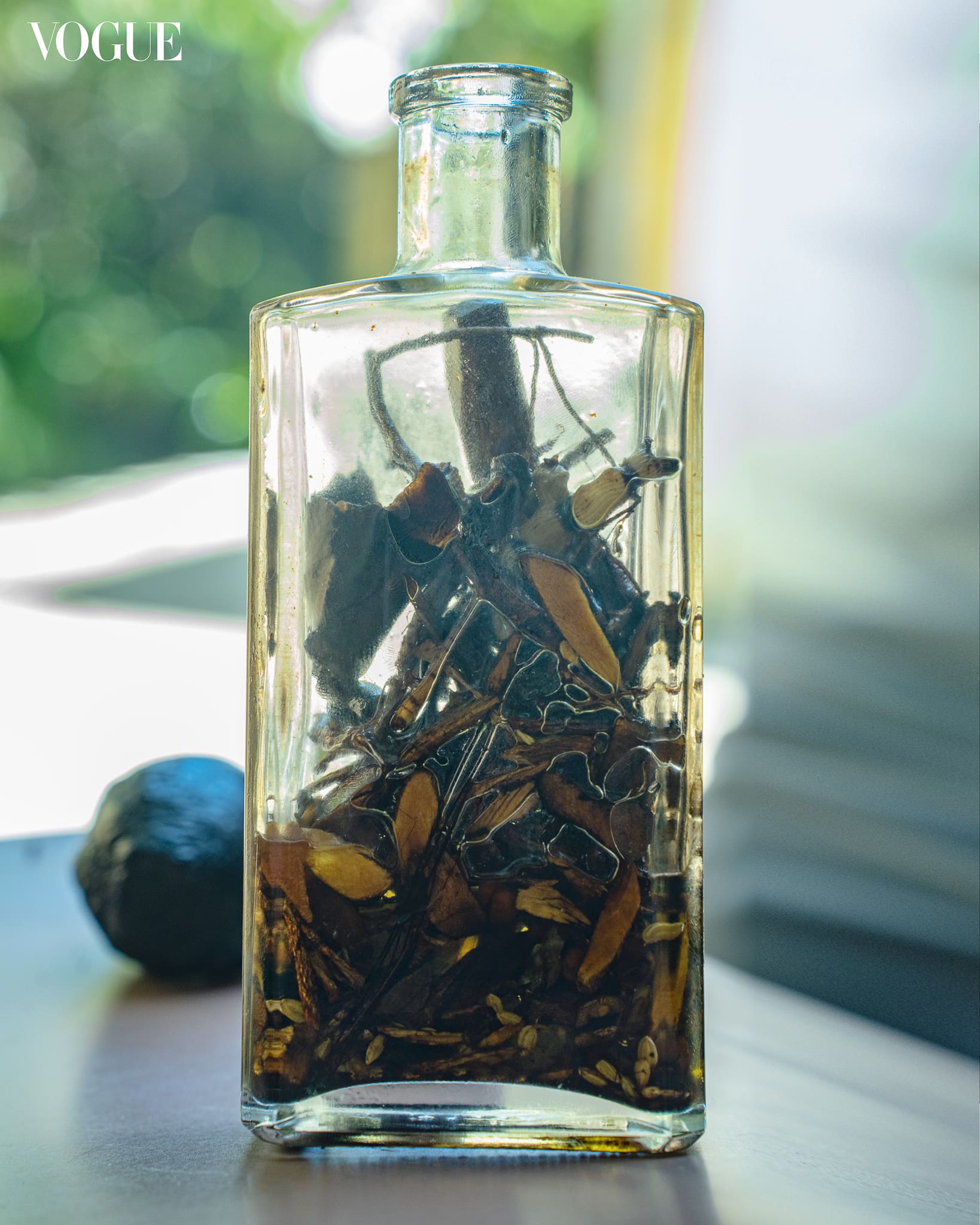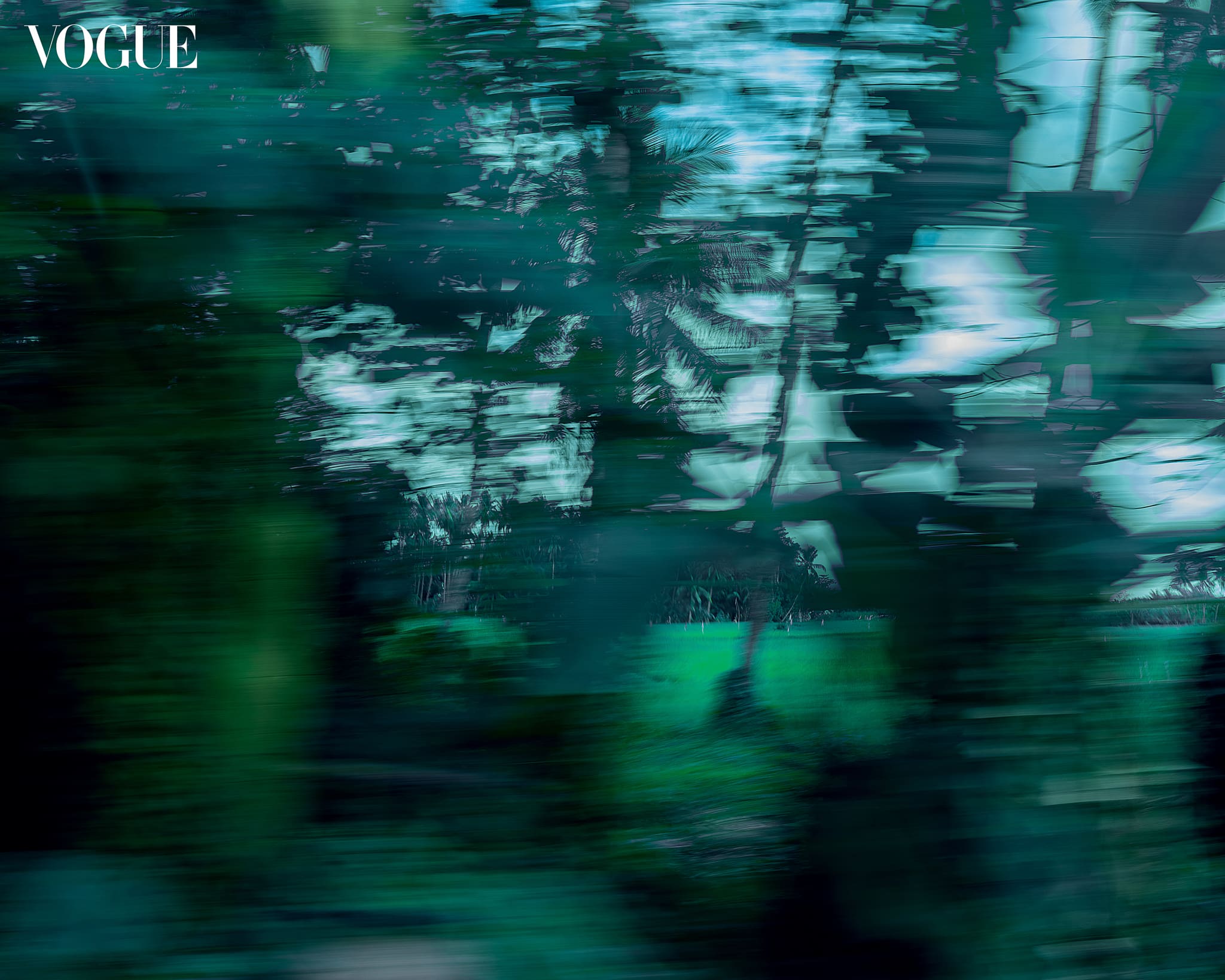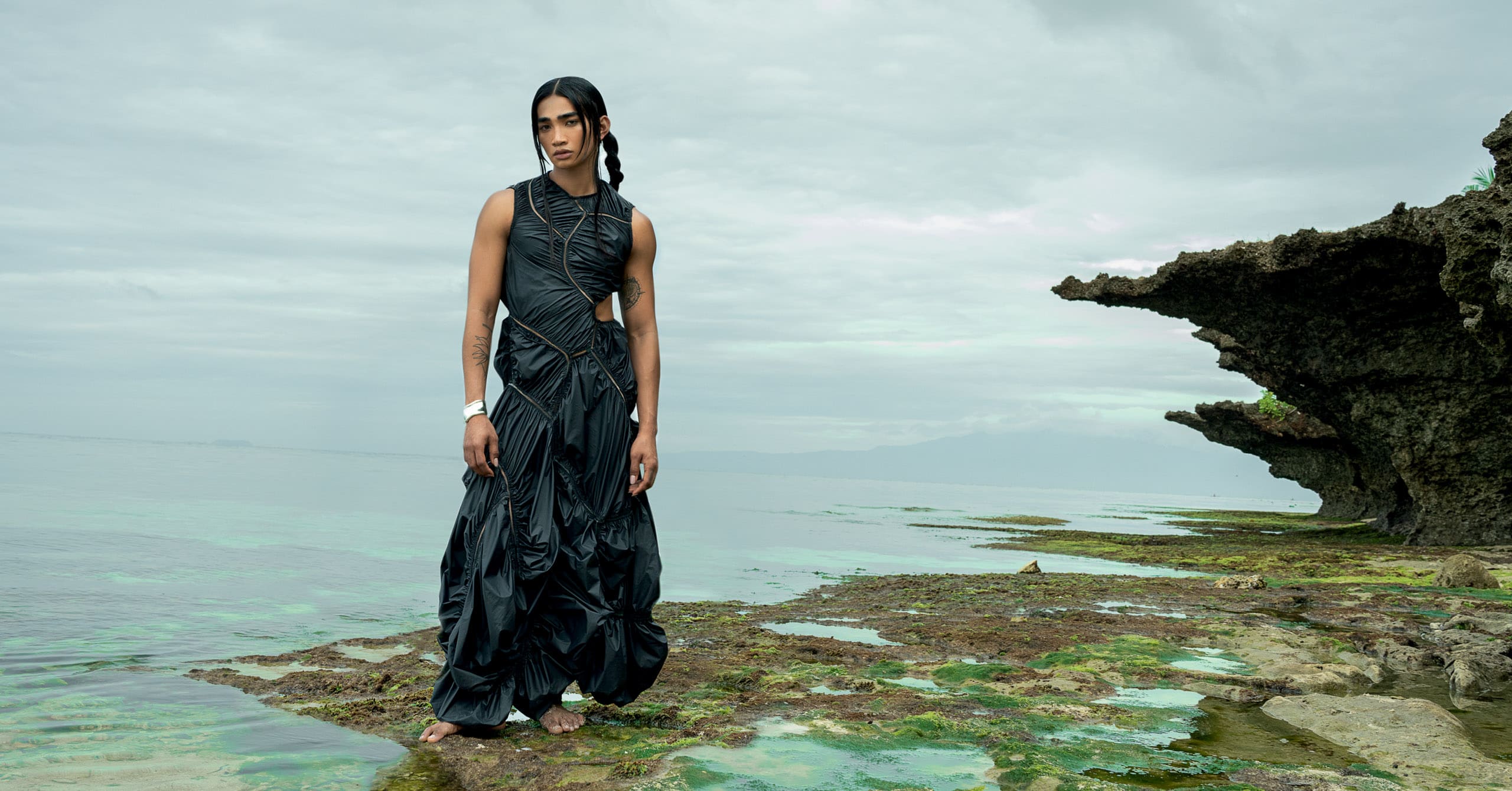MELITTA BAUMEISTER crunchy dress in black, TIFFANY & CO. Elsa Peretti bone cuff. Photo by Regine David
The island is also known as the Island of Fire because of its stunning, saturated sunsets and the cloud of fireflies that light up the trees. Photo by Regine David
Siquijor, the island of fire, mystery, and healing, forges toward sustainability.
“Welcome to Siquijor! The island of no return,” laughs our tour guide.
“You will discover that the island is filled with beauty and wonder.” He promises, “That is why you’ll never want to leave.”
High hopes indeed. But Siquijor’s particular reputation precedes it. Called “Isla del Fuego,” or “island of fire,” often attributed to Miguel Lopez de Legaspi, 1656—whether it was because of the saturated sunsets that lit the islands, or the cloud of fireflies that shift in the molave trees by the edges of the mangroves. Over three centuries later, these mystical notions shrouding the islands have not been lost.
Though popular conceptions of Siquijor may fall into urban myths of enchantment, the island’s truth lies closer in its tradition of healing. Generations of mananambal (or traditional faith healers or traditional medicine practitioners) have inherited traditional healing practices, giving much importance to utilizing elements from nature. There are several ways to carry out the island’s healing traditions, with common ones being bolo-bolo with the use of water, bagacay (bamboo straw), and a rare black stone.
“The island province is popular for a fusion of animism and Catholicism brought by Spanish colonization,” our guide Luis Borongan shares, “and an active practice of what is considered remnants of pre-colonial beliefs.”

Holy Week is highly revered every year on the island. Leading up to this April’s Black Saturday, faith healers spend weeks foraging for various elements in the forests. Healers usually culminate their kawa practice in a Healing Festival, where big cauldrons are set up early in the morning at the public square. Visitors can come and find the exact herbal concoction to address their individual ailments.
Throughout the island, one finds healing huts. There is a well-known stop high in the mountains, Balay Pahauli, owned by Juanita Torremocha, one of Siqiuijor’s esteemed traditional healers. Her practice includes massage therapy and fumigation using local medicinal plants.
One traditional healer spoke about the wonders grounding can do for a person and how it can connect them to a person’s most elemental state. “We are not meant to live enclosed in concrete structures or high rises,” he says. “We are meant to live in nature. To be with nature, to be one with nature. We’re so fixated on being individuals that we forget to be human,” the healer continues.
Siquijor’s relationship with nature, it seems, is both internal and external.

One of the most popular ways to take in all the breathtaking views of the island is through motorbike rental. Helmets under the heavy, tropical sun may not be for everyone. But the possibilities offered by self-navigating your way along the coastline, with its crystal clear waters and mangrove outposts, are endless. Rice fields sprawl into lush mountains, and coconut trees sway in concert. Here, one can traverse paradise, albeit on limited petrol. As the third smallest province in the Philippines, end to end, Siquijor can be crossed in about two hours. Further inland exploration will take as much time as one pleases.
The island is home to 18 kilometers of coral reefs, a delight for divers from all over the world. Many of the island’s resorts double up as dive centers too. Aquatic bliss comes as no surprise as the waters of Siquijor, the majority of which is the Bohol (Mindanao) Sea, are home to bountiful marine life. Vibrantly colored butterfly fish and damselfish, giant clams and even Dugongs are spotted beneath the surface. On deeper dives, schools of barracuda, blue-spotted rays, and sea turtles often make an appearance.
For the spelunker, there are Siquijor’s caves. About a 45-minute drive from San Juan, with mountainous paths and winding roads, one reaches the sleepy village of Cantabon, where an accessible underground cave waits.
One can’t-miss spot is Cambugahay Falls, located in the middle of a rainforest and is famous for its three tiers of blue waters. Local guides here frequently steal the spotlight, as their antics leave visiting crowds amused. Popular on TikTok and Instagram, these guides are dubbed “human drones” because of the clever ways they capture content videos for tourists, including, but not limited to, swinging on tree vines.
The island is also home to around six well-known beaches, with Paliton being one of the most visited. Located in the town of San Juan, this beach is surrounded by quaint cafés, casual restaurants, and hostels. It is also a popular snorkeling spot. Located on the western side of the island, Paliton is an ideal spot for viewing that spectacular Siquijor sunset. Near Paliton are other pristine beaches, such as Salagdoong Beach, that boast white sand shorelines and coves with clear blue waters.
Path to Sustainability
“Our direction in tourism development is getting back to nature,” Engr. Cle Bern Paglinawan shares. “That is why we demolished the concrete structures in Salagdoong beach so that it will look very natural, which have gained the appreciation of both Siquijodnons and our tourists.” Paglinawan is an environmental activist who has been a board member of the province’s local government since 2016. It has been the LGU’s top priority to implement eco-friendly tourism throughout the island.
In 2018, Paglinawan and his dedicated team authored several environmental ordinances, including the Single Use Plastic Ordinance. Through this, the Mother Earth Foundation and the Global Alliance for Incineration Alternatives (GAIA) visited Siquijor for the Zero Waste Program. These organizations have declared Siquijor as the first zero-waste province in the country last year.
Global organizations have also taken initiatives to uplift the island’s sustainability efforts. The Pacific Asia Travel Association (PATA) conducted a four-day seminar for the island’s LGUs and tourism stakeholders. An outcome of this seminar was the formation of the Destination Management Organization. “This serves as the voice of the community and the environment,” shares Paglinawan. “They shall see to it that Siquijor Island will be a sustainable destination.”

With all the beauty Siquijor’s natural wonders offer, it is only right to do whatever it takes to protect and preserve. The local government’s sustainable initiatives are being integrated into daily life, and they hope for more support from locals and tourists alike.
One comes to Siquijor one way but leaves as a different person. It’s transformative in multiple manners; the island honors Nature’s own healing properties and opens up different avenues for outdoor adventures. It is a place where remnants of the past sit in concert with the present, whether in the architecture of San Isidro Labrador Church convent, in the practice of bolo-bolo, or in the heartfelt eco-consciousness that is present in conversations with the locals.
There is truth when they say that the people make the experience worthwhile. But the island offers even more to hold you in thrall, with its beaches that feel like they have just been discovered, the stalls of curious bottled herbs and leaves that promise remedies, or the 400-year-old Balete tree that watched as the Spaniard colonizers came and went. But, the fireflies of “Las Isla del Fuego” have never left. They still light up the water’s edge in Hambilica. Perhaps, that is always where the magic lies.

